Doença de Petri da Videira - UTL Repository - Universidade Técnica ...
Doença de Petri da Videira - UTL Repository - Universidade Técnica ...
Doença de Petri da Videira - UTL Repository - Universidade Técnica ...
Create successful ePaper yourself
Turn your PDF publications into a flip-book with our unique Google optimized e-Paper software.
length from cut to the 3rd bud and the length of 1st plus 2nd interno<strong>de</strong>s were registered,<br />
as was the length of the necroses. Re-isolations were ma<strong>de</strong> for all replicates and for all<br />
experimental and control treatments. Each shoot was divi<strong>de</strong>d in different segments,<br />
<strong>de</strong>pending on the length of the necrosis, and re-isolation was ma<strong>de</strong> from each segment<br />
by taking five pieces of symptomatic wood tissue and placing them onto PDA plates, with<br />
250mg L -1 chloramphenicol.<br />
Conclusions were drawn based on the percentage of re-isolation, as these gave a more<br />
precise i<strong>de</strong>a of the efficacy of the fungici<strong>de</strong>s. For cv. Syrah all treatments revealed a level<br />
of re-isolation lower or similar to the reference carben<strong>da</strong>zim+flusilazol, except for the<br />
BUC 74700F F and BUC 40300 F treatments (8 and 6, respectively). However, when the<br />
prevention and slowing down of the disease progression were consi<strong>de</strong>red, the best<br />
results were obtained for treatments 3 (BUC 31300 F) and 7 (BUC 61700 F). In these<br />
cases Pa. chlamydospora was not reisolated from the segment 4. For cv. Touriga<br />
Nacional only treatment 7 (BUC 61700 F) was able to provi<strong>de</strong> a lower or similar level of<br />
fungal re-isolation than carben<strong>da</strong>zim+flusilazol. In this case, however, when prevention<br />
or slowing down the disease progression was consi<strong>de</strong>red, the best treatment was 7 (BUC<br />
61700 F). This was the only treatment from which Pa. chlamydospora was not re-<br />
isolated.<br />
To complement the classical method of re-isolation, a molecular approach based on<br />
nested-PCR method was used, in or<strong>de</strong>r to confirm the presence of Pa. chlamydospora in<br />
the grapevine wood tissues. This method involves two sets of primers, used in two<br />
successive runs of polymerase chain reaction. The first set (ITS4 and ITSF1) was used to<br />
amplify a fragment of the ITS region of fungi, and the second set (Pch1 and Pch2) to<br />
amplify, within the first run product, a specific fragment of 360 pb from the ITS region of<br />
Pa. chlamydospora. The results obtained by nested-PCR were not always in agreement<br />
with those obtained from the re-isolation method, but in general the PCR-based method<br />
was more sensitive.<br />
V



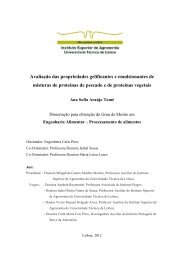
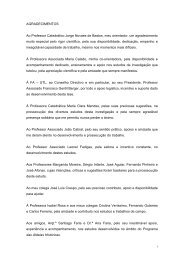

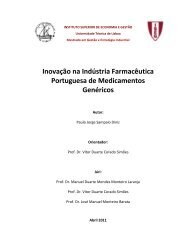
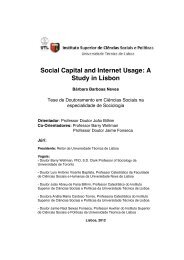
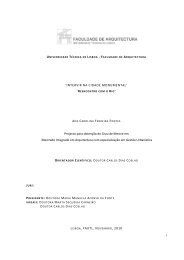
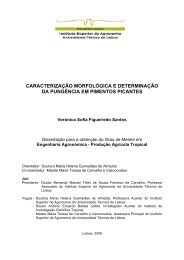

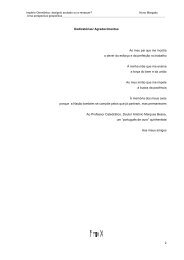
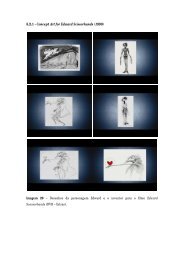
![Tese - Es..[1].pdf - UTL Repository - Universidade Técnica de Lisboa](https://img.yumpu.com/25707135/1/184x260/tese-es1pdf-utl-repository-universidade-taccnica-de-lisboa.jpg?quality=85)


